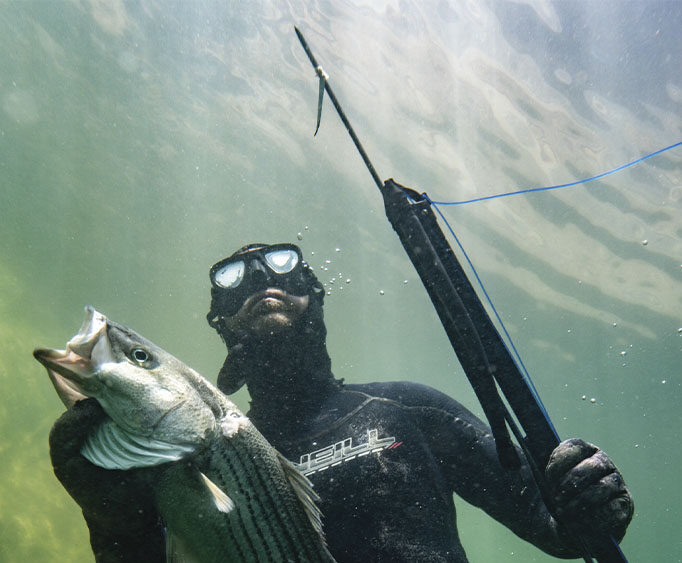When you think of spearfishing, you may imagine yourself lounging on a tropical beach or diving into the ocean’s depths. However, spearfishing is broader than just these exotic locations. In fact, spearfishing has surprisingly become increasingly popular in Idaho.
This surge in popularity is due to the havoc caused by invasive fish species on the local wild game, such as sockeye and rainbow trout. To preserve the fishing ecosystem, fans of the activity are being encouraged to fish for invasive species like carp, sucker fish and pike minnow.
Jake Whitlock and River Curtis, natives of Sun Valley and graduates of the Sun Valley Community School class of 2015, now reside in Boise and have taken up spearfishing as a hobby. They consider it a form of sport fishing, an exciting and adventurous way to spend time in the water. More importantly, they believe spearfishing for invasive fish species is a positive step towards preserving the ecosystem.
“Spearfishing is fun because it’s a blend of sport fishing, and it’s positive for the ecosystem,” Whitlock says. Although the Idaho Fish & Game prohibits using spears or bows to fish for native species, it encourages people to go after invasive fish. These invasive species deplete the food supply and game fish eggs, making them destructive to the native fish population.
Spearfishing for invasive fish species can be done in various ways, such as using a spear from the shores, a boat, free diving, or scuba diving. Similarly, bow fishing can be done from a boat during the day or at night. Whitlock and Curits mostly prefer free diving, although they have used scuba gear to explore deeper waters.
“Invasive fish exist at all depths,” says Curits, emphasizing the importance of diving deep to locate them. “They can be 10 feet deep, or sometimes we must go between 30 and 50 feet to find them.”
Spearfishing is fun but should be taken seriously. Curits adds that people should be mindful of others when spearfishing at a populated lake such as Redfish Lake in Stanley.
“The speargun is a dangerous tool, so you must be mindful of people who are recreating on the beach. Redfish is a good example of a place where you can spearfish, but you should also watch out for people,” Curtis says. “In similar contrast to fly fishing, you’re not going to cast your rod right in front of people, so we make sure to keep our distance, so people don’t feel scared.”
For the most part, Whitlock says people who spearfish or bowfish are met with a positive interaction from the public, usually sparked with curiosity about the sport.
Spearfishing in Idaho is defined as fishing with a bow and arrow, crossbow, spear, or mechanical device, excluding firearms. Nonetheless, you must have an Idaho fishing license; no other permit is necessary.
Spearfishing or bow fishing is allowed throughout the state between Idaho Fish & Game’s seven regions of fishable waters: The Panhandle, Clearwater, Salmon, Southwest, Upper Snake, Southeast and Magic Valley. In some areas, Fish & Game encourages people to fish for invasive species and issues tags.
Nongame fish, on the other hand, can be taken using archery or spear equipment, except protected nongame fish such as Shoshone, Wood River, and Bear Lake sculpin, sand roller, northern leatherside chub, bluehead sucker, and Pacific lamprey, which may not be taken by fishing or archery or spear equipment.
The equipment used for spearfishing includes a mask, snorkel, fins, a wet suit, and, of course, a speargun. Overall, someone who might be interested in getting into the sport would spend around $400-$500 for a complete setup.
Idaho Fish & Game encourages it to protect the local ecosystem from destructive invasive species. Spearfishing and bowfishing for native species, however, are strictly prohibited by the Idaho Fish & Game rules and regulations and should not be attempted.


